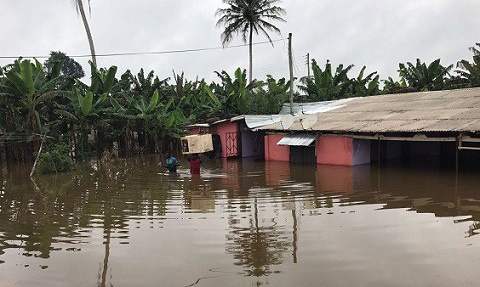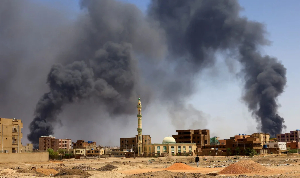Just a couple of years ago, people living in Kumasi would have had a troll at residents of Accra for the perennial flooding of the capital city, whenever the rains set in.
But today, makeshift swimming pools abound in Ghana’s second largest city – homes, markets and streets are now abodes of flood waters anytime the heavens open.
Flooding is indeed a growing phenomenon in the Garden City; buildings are submerging, people are drowning and communities are being displaced. The excessive flood waters in the past two months have collapsed bridges and washed away bitumen on roads, worsening the already pothole-ridden deplorable roads.
Arterial roads are almost impassable with floods everywhere. Unlike Accra which is a coastal city, flood should not be a natural occurrence in Kumasi.
This makes the situation pathetic. The reasons for flooding are not far-fetched but the solution to arrest the havoc caused by rain waters is eluding city authorities.
Poor Waste Management
Each downpour exposes the city’s poor waste management. Uncollected solid waste and other materials indiscriminately disposed swim in the flood.
When people are unable to access waste bins within their immediate environs, they tend to litter and dump their waste into gutters, water bodies, along streets and other open spaces.
Poorly disposed waste eventually chokes the free flow of liquid waste. When rain water cannot have free passage through the filth, flooding rears its head.
Poor Drainage Systems
Most communities lack good drainage systems for liquid waste disposal and passage of flood waters. Rivers and streams have turned into urban sewage systems.
Each downpour therefore puts a strain on bridges and roads and the floods explore outlets to run out.

The waters either find rest in homes or push structures off its way to run out. Along the line comes the devastation.
Defective Urban Planning Kumasi is fast developing into a cosmopolitan city, but a cursory observation of new constructions and infrastructural development points to a defective urban planning.
New communities and building projects are haphazardly springing up on wetlands and water bodies; trees are being fallen indiscriminately for modern building structures; and there are no flood control contingencies.
The city’s poor environmental regulations put the ecosystem at great risk.
Costly Devastation
The number of flood-prone suburbs in Kumasi is increasing, as the city’s vulnerability to destruction caused by rain water is exposed.
A good number of bridges have collapsed and others are on the verge of caving in, putting commuters and local residents at safety risk.
Farming, trading and other economic activities are impeded as commuters struggle to access the roads and bridges. Commuters get frustrated in spending long period of time for short trips, cost of plying roads increases as vehicles easily breakdown whilst people are exposed to road accidents.
In spite of the havoc caused by the rains, there seems to be no immediate or long term intervention in sight. Grave concerns have been expressed about the indiscriminate building on waterways in the city.
Planners and environmentalists have also prevailed on the city authorities to enforce by-laws on sitting of buildings and other development projects.
Soon, the rains will stop and citizens as well as authorities will go to bed on the causes and effects of floods until yet another year.
The situation could worsen. Hopefully, the current man-made disaster of flooding will serve as wake-up call to begin climate-smart planning and re-engineering of the city to avert re-occurrence and adapt sustainably to harsh weather conditions.
General News of Wednesday, 12 July 2017
Source: 3news.com













